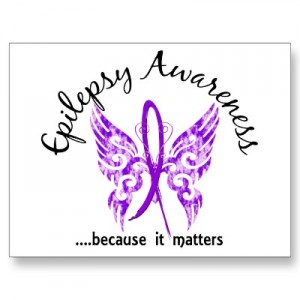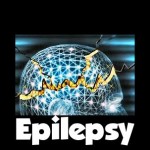
My girlfriend’s son, Troy has epilepsy. That’s the main reason I began to learn more about it.
I had seen three previous incidents of epileptic seizures during my time running a backpackers hostel, but it’s rather different when it happens to a member of your family.
Fortunately, I have only had to help Troy deal with two quite bad falls and one major seizure in the time I have known him and I hope that the researchers can find a cure before he has to endure any more.
Anyway, here is some information that may help people to understand it a little better:
Epilepsy is a disruption of brain function that interrupts the normal electrical activity of the brain causing brain seizures. Normally, neurons, which are cells that carry electrical impulses, allow communication between the brain and rest of the body. In epileptics, neurons ‘fire’ or send electrical impulses toward surrounding cells, stimulating neighbouring cells to fire at one time, causing an ‘electrical storm’ within the brain, which results in physical changes called seizures or ‘fits’. It is only when there is a tendency to have recurrent seizures that epilepsy is diagnosed.
In 70 percent of all cases the cause of epilepsy cannot be identified. Head injuries, strokes, brain tumours, infections such as meningitis, lead poisoning or injury during childbirth mostly cause the remaining 30 percent. There are many different types of seizures.
Young children and older people are more prone to develop this condition, however it can occur in persons of any age. More than 40 types of epileptic seizures are known to exist and each type is characterized by its own EEG findings and treatment.
More than 60 million people across the globe are diagnosed with epilepsy. The current trend indicates that more new cases are discovered in developing countries. In Australia, it is estimated that more than 200,000 people suffer from epilepsy.
The main types of seizures are:
- Tonic-clonic seizures
- Absence seizures
- Complex partial seizures
- Simple partial seizures
Convulsive seizures
- Tonic-clonic seizures are convulsive seizures where the body stiffens (tonic phase) followed by general muscle jerking (clonic phase), and involves the whole brain. The person loses consciousness, their body stiffens and limbs jerk. These seizures generally last up to three minutes. After the seizure the person may want to sleep, or they may have a headache or be confused and disoriented. The person may experience an ‘aura’ which can precede a tonic-clonic seizure, and this may act as a warning giving the person time to seek a safe place before losing consciousness.
Non-convulsive seizures
- An absence seizure causes the person to lose contact with their surroundings for about 30 seconds, with little or no outward sign that anything is wrong. This type of seizure mainly occurs in children and is often mistaken for daydreaming or lack of concentration.
- A complex partial seizure is accompanied by impaired consciousness and recall. It may also involve staring, automatic behaviour such as lip smacking, chewing, mumbling, walking, grunting, or the repetition of words or phrases. The person may experience an ‘aura’ which can precede a complex partial seizure.
- A simple partial seizure produces a sudden shock-like jolt to one or more muscles which increases muscle tone and causes movement. These sudden jerks are like those that occur in healthy people as they fall asleep.
Our goal is to help improve quality of life of people with epilepsy by providing information on how to manage this condition and directing them to appropriate organisations and individual experts. The Epilepsy Association of WA will provide general information on epilepsy, epileptic seizures, epilepsy causes and treatment.
Epilepsy Association of Western Australia
Suresh Rajan (Mr) – Executive Officer
P: (08) 93467699 F: (08)93467696 E: epilepsy@cnswa.com
The Niche Suite B
11 Aberdare Road, Nedlands WA 6009
The Search For A Cure
 Scientists in Australia have identified faulty genes, which offer some explanation for otherwise poorly understood cases of Sudden Unexpected Death In Epilepsy.
Scientists in Australia have identified faulty genes, which offer some explanation for otherwise poorly understood cases of Sudden Unexpected Death In Epilepsy.
About 150 Australians with epilepsy die mysteriously every year in a scenario recorded by doctors as SUDEP.
Professor Chris Semarian, from the University of Sydney and the Centenary Institute, said some people with a history of epilepsy die suddenly with no apparent cause of death.
The study is the largest of its kind to be conducted and has uncovered a common fault in a family of genes known to play a key role in the function of the brain but also the rhythm of the heart.
Professor Semarian said the discovery might eventually help to find a way to treat or heal the problem.
Short URL: http://www.kidsolo.com/?p=2893
See Tips On Care and Treatment – click here
